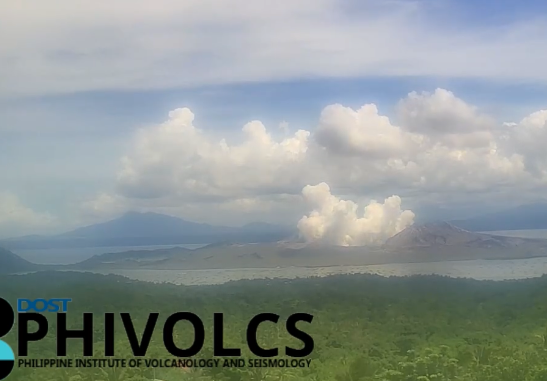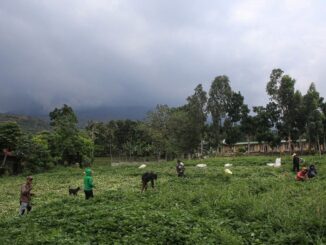
A minor phreatomagmatic eruption occurred at the main crater of the Taal Volcano on Saturday, the Philippine Institute of Volcanology and Seismology (PHIVOLCS) said.
In an advisory, PHIVOLCS said the eruption occurred at 11:32 a.m., which lasted four minutes according to the visual, seismic and infrasound records of the Taal Volcano Network (TVN).
“The event produced a short black jetted plume followed by a steam-rich plume that rose 2,000 meters above the Main Crater before drifting southwest based on IP camera monitors,” it said.
PHIVOLCS added a total of five (5) phreatic events were also recorded prior to the eruption.
Further, traces of ash were reported in areas of Agoncillo, Batangas.
PHIVOLCS said 30 minor eruptive events have been recorded in total at the Taal Volcano since September 22.
Sulfur dioxide (SO2) emissions recorded on Friday, October 4, averaged 3,276 tonnes per day.
Nevertheless, average SO2 emissions since January of 2024 remain high at 6,673 tonnes per day.
“The phreatomagmatic event was likely driven by sudden contact of water with a small branch of shallow magma that has been in place beneath the Taal Main Crater and that has been degassing sustained levels of SO2 for the past three years,” PHIVOLCS said.
“The background levels of volcanic earthquake activity and ground deformation detected at Taal indicate that unrest is unlikely to progress into a major magmatic eruption at this time,” it added.
PHIVOLCS reminded the public that Alert Level 1 prevails over Taal Volcano, meaning it is still in abnormal condition and should not be interpreted to have ceased unrest nor ceased the threat of eruptive activity.
Under Alert Level 1, sudden steam-driven or phreatic explosions, volcanic earthquakes, minor ashfall and lethal accumulations or expulsions of volcanic gas can occur and threaten areas within the Taal Volcano Island (TVI), PHIVOLCS said, adding that Alert Level 2 may be raised if phreatomagmatic activity persists or intensify.
Also, degassing of high concentrations of volcanic SO2 continues to pose the threat of potential long-term health impacts to communities around Taal Caldera that are frequently exposed to volcanic gas.
“DOST-PHIVOLCS strongly recommends that entry into TVI, Taal’s Permanent Danger Zone or PDZ, especially the vicinities of the Main Crater and the Daang Kastila fissure, must remain strictly prohibited.”
It advised local government units to continuously monitor and assess the preparedness of their communities and undertake appropriate response measures to mitigate hazards that could be posed by long-term degassing and related phreatic activity.
It also urged civil aviation authorities to advise pilots to avoid flying close to Taal Volcano, as airborne ash and ballistic fragments from sudden explosions and wind-remobilized ash may pose hazards to aircraft.
—Jamil Santos/ VAL, GMA Integrated News





Be the first to comment